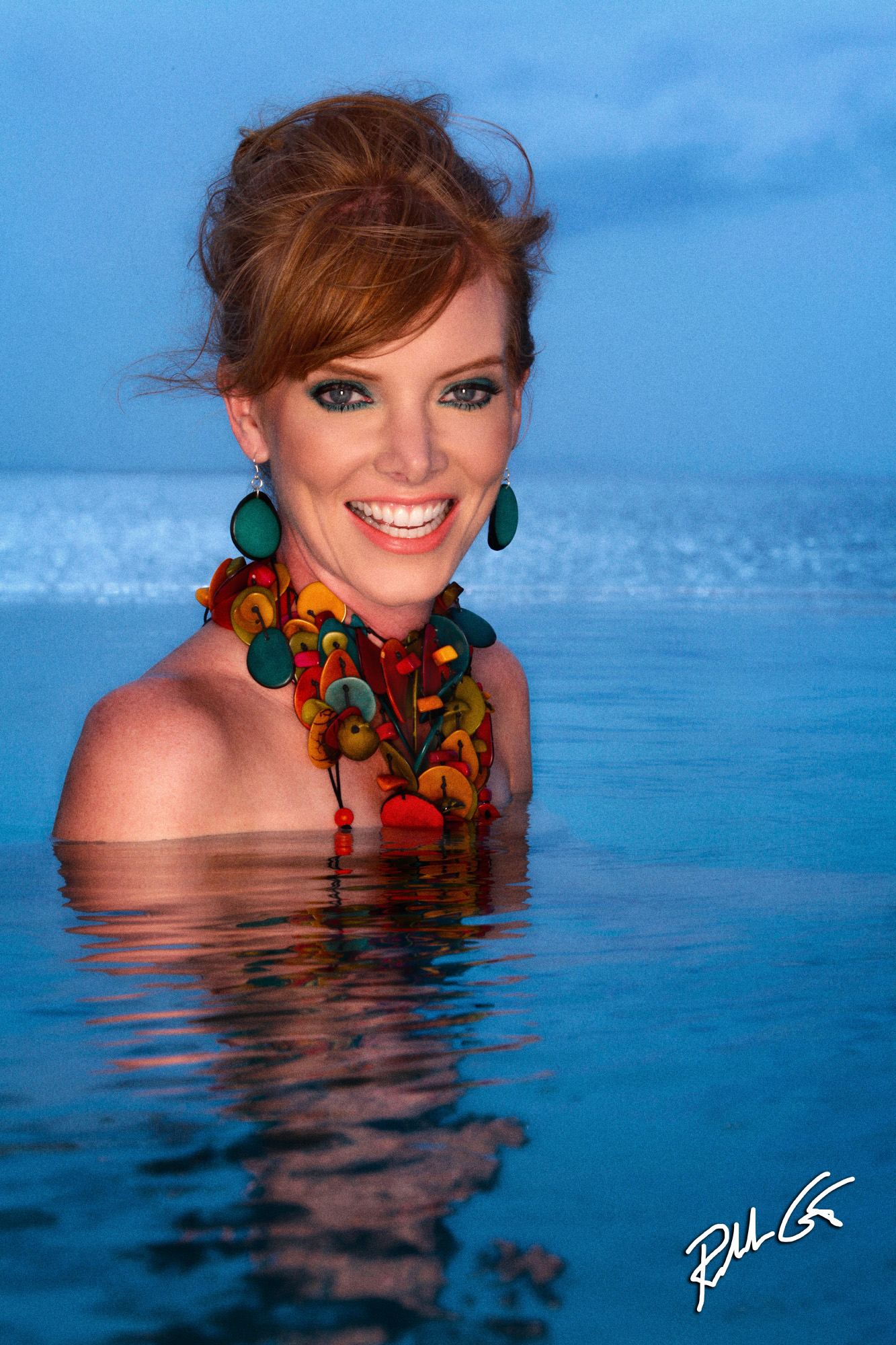
This photo is a result of using a scrim over the model who is illuminated with a beauty dish with flash and a 3/4 CTO gel.
Any professional photographer will tell you the best light for outdoor photography with people in the scene is the first hour in the morning and the last hour of the day, the Golden Hour. This is one reason SUNBOUNCE provides a Golden Hour Calculator to help you plan your photo sessions. However, working only two hours per day won’t pay the bills, so photographers use photographic lighting gear, like scrims in photography, plus the SUN-SWATTER and even the SUN-CAGE, to keep working when the light is at its worst outdoors.
It’s all about the sun and its constant change of the angle of light throughout the day and this is why scrims in photography are important. The reason the sunrise and sunset hours are so perfect, is that the light approaches from an oblique angle, not directly overhead. Not to mention the color temperature, measured in Kelvin, is on the warm side of the light spectrum that starts around 1600 Kelvin and reaches up 3500 Kelvin about an hour after sunrise then moves on to 4300 to 4500 Kelvin before entering the 5000 to 6000 Kelvin zone that blankets most of the day.
This is why the SUNBOUNCE Sparkling Sun photography reflector fabric screen provides a minus 650 Kelvin of color temperature on the front side and a minus 400 Kelvin of color temperature on the backside from the light that strikes it. By far the Sparkling Sun is my favorite reflector fabric because it adds a hint of extra warmth.
This is important when you photograph people outdoors during the day and the sunlight is your main source of reflected light. The Sparkling Sun fabric characteristics will flatter your subject vs. a gold or silver reflector. When you use scrims in photography you can bounce light onto your subject with a reflector like the SUNBOUNCE MINI or PRO fitted with the SUNBOUNCE Sparkling Sun fabric screen.
But then there are times, especially when the background in your scene has a boring sky, that you want to change the color of the sky or background to add impact to your photos. On method is to use white balance photography techniques like placing a three-quarter CTO photography gel over your flash which converts a typical flash Kelvin color temperature of 5400K to around 3200K, similar to a warm tungsten light.
This is a behind the scenes video with the SUNBOUNCE SUN-SWATTER portable scrim and a SUNBOUNCE MINI fitted with the SUNBOUNCE Sparkling Sun photography reflector fabric screen on location in Maui.
When you use this photography technique outdoors you must change your digital camera white balance setting to a 3200K to 3400K range. This photography technique will provide a hue of blue to your sky or anywhere the gelled flash doesn’t strike or reach.
A cool technique, but if it’s done in the average hours of daylight, or in direct overhead sun, you must scrim your light, or diffuse its harshness on your subject. This is easily done with a SUNBOUNCE SUN-SCRIM, which come in 6-foot by 6-foot, 8-foot by 8-foot, and 12-foot by 12-foot in sizes and with various fabric screen options — my favorite is either the minus 1/3 stop or minus 2/3 stop translucent diffuser screens.
Caution: Do not attempt this type of photography session with water and flash unless you are a professional and have safety protections in place. We used a “battery-operated” flash and professional assistants plus other safety precautions. This is a behind the scenes video.
Scrims in photography placed directly above your subject essentially “cut” some of the light but more important scrims with translucent fabric screens diffuse the hard shadows created by direct overhead sunlight on a clear sunny day. Harsh light and shadows become softer with this photography lighting technique.
In a nutshell with scrims in photography, when you use a SUNBOUNCE SUN-SCRIM, SUN-SWATTER or SUN-CAGE with the proper translucent diffuser screens, you can work throughout the entire day, not just during the early sunrise or late sunset hours. This is important to any professional photographer as two-hours of work a day won’t pay the bills — besides, scrims in photography allow you more time to create masterpiece photographs not mediocre photos, there is a difference.



